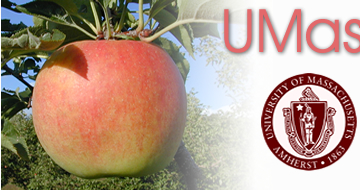

| FRUIT ADVISOR HOME | CONTACT | ABOUT | ||
 |
 |
|
| Consumer Evaluation of New, Antique, and Little Known Apple Varieties | ||
|
|
||
Results & Discussion The apples selected to be included in this survey were harvested over an 8-week period starting in late August and extending through late October (Table 2). The diameter of all apples was at least 2.90 inches, and most apples averaged over 3 inches in diameter. The apples less than 3 inches were Early Shamrock, which was harvested about 3 weeks early, and Sansa and Chinook which are considered smaller varieties. Flesh firmness ranged from 19.9 pounds to 13.6 pounds. In this study, we allowed fruit to ripen and develop typical varietal flavor and taste, and consequently some were less firm than might normally be experienced in regular commercial channels. This was not considered a problem, since none were stored long, and we felt that it was most important to present to the consumer an apple with excellent taste. The apples evaluated differed widely in appearance and color. Sugar content, expressed as soluble solids, was generally higher than many mainstream commercial varieties. | Table 2 | Table 3 | Table 4 | Each participant was given the opportunity to rate the apple under evaluation for appearance, taste, crispness, juiciness, texture, and overall desirability on a scale from 1 to 10, where 1 was the best score and 10 was the lowest score. Overall, the ratings for all varieties in each category were very high (Table 3). Only Hawkeye Delicious had a majority of responses in the 4 to 5 category. Varieties were categorized into four groups based upon consumer ratings in the taste and overall ranking (Table 4). Varieties that had the highest rating and were given an Excellent (below 2.5) were: Akane, Creston, Hudson Golden Gem, Liberty, MN 1914, NJ 90, and Shizuka. Only Chinook, Hawkeye Delicious, and Topaz were rated Fair, but even in this group there were many survey participants who expressed high praise for each. The remaining varieties in this evaluation scored between 2.6 and 3.5 and were considered Good or Very Good and represent excellent candidates for future planting. |
||
| ©Copyright 2008 University of Massachusetts Amherst. Site policies. Produced and maintained by the UMass Fruit Program. |